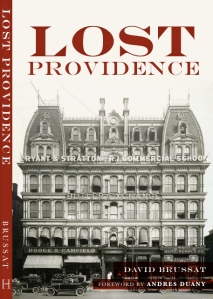
Justin Shubow writes: “The planned Dallas parking garage Mark Lamster bemoans [I would say “affects to bemoan”]. Is it any worse than the other banal boxes in the image? Compare the pleasing, run-of-the-mill Beaux Arts building at the far left.” (The Dallas Morning News)
Some leaders of the Congress for the New Urbanism, which met this month in Dallas, will find Shubow’s defense difficult to swallow. These are New Urbanists who believe that in spite of its traditional reputation, the CNU should be as welcoming to modernists with the proper respect for urbanism. They don’t realize that modernism is averse to urbanism right from the very core of its Corbusian principles. CNU has bent over backward to stress its “agnosticism” toward style, and that may be politically savvy, but its success continues to rely on the assumption by most developers and people in the market for a house that New Urbanism is all about reviving the old urbanism that prevailed for 2,000 years until World War II (including traditional styles of architecture), which modernism is all about destroying.
Shubow’s piece sensibly buys into this conventional view of New Urbanism. He did not do much more than allude to the continuing debate among New Urbanists over architectural style – perhaps because Lamster himself, in “Why Is So Much Architecture Junk?,” was keen to avoid noticing that the debate even exists – too much evidence of liberality to suit his almost entirely blind attitude toward the congress and its works.
Shubow targets Lamster’s desire to let architects and architecture off the hook for the state of the built environment around the world:
Lamster allows architects to abdicate responsibility. By no means should they set the tone for developers and contractors. By no means should they steer greedy clients in the right direction—as if the problem of the client’s profit-motive is somehow a new problem in architecture. As if we haven’t been building junk architecture for decades, under economic booms and busts alike. As if there hasn’t been junk architecture around the world in both socialist and capitalist countries. Lamster repeats the classic refrain that allows architects to maintain their self-respect: When architecture is bad, blame the clients and socio-economic structural forces. When it is good, credit the hero architects.
Zappity-doo-dah! I can’t say enough in praise of this latest piece by Justin, who has agreed to deliver a keynote speech at the next Bulfinch Awards celebration, sponsored by the New England chapter of the Institute of Classical Architecture & Art. (More on that to come.) I hope when he is in Boston he will uncork such riffs as this passage, in which he characterizes many of the young people coming into the CNU orbit, and how they differ from the “cutting-edge Modernists” whom they wish they could flee:
Consider that the same young architects and planners, like so many millennials, eat heirloom tomatoes in slow-food restaurants, wear heritage flannels and Red Wing boots, live in historic districts with contextual additions, listen to roots rock, and drink pre-war cocktails in new bars with new tile floors, tin ceilings, and exposed brick walls. The most cutting-edge Modernists, by contrast, offer up the architectural equivalent of pretentious molecular gastronomy, experimental GMO Frankenfoods, deconstructed Helmut Lang fashion, and atonal synthesizer music. And they prefer petrochemical to natural building materials.
For more on Mark Lamster, I took him down here a year ago.



